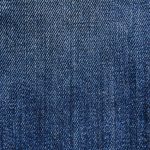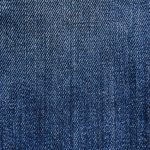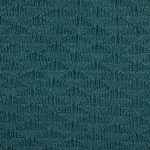You’ll find herringbone fabric offers a unique V-shaped pattern that adds subtle texture and durability to your shirts without sacrificing comfort. It combines softness with strength, making it breathable and suitable for various seasons. Whether made from cotton, wool, or blends, herringbone resists wear better than many fabrics and keeps its shape well. If you want to explore how it compares to other fabrics, care tips, and style versatility, there’s plenty more to discover.
Table of Contents
Key Takeaways
- Herringbone fabric features a durable zigzag weave offering subtle texture and strong shape retention for shirts.
- It balances softness and durability, providing comfortable all-day wear with natural breathability and moisture management.
- Common materials include cotton, wool, linen, and blends, each influencing warmth, weight, and wrinkle resistance.
- The fabric resists wear, pilling, and wrinkles, ensuring longevity and easy maintenance with proper care.
- Versatile for casual or formal styles, herringbone adds elegance and unique texture compared to twill, oxford, or poplin.
Understanding the Herringbone Weave Pattern
The herringbone weave pattern creates a distinctive V-shaped design that resembles the bones of a herring fish. When you look closely, you’ll notice the fabric’s zigzag arrangement, formed by alternating the direction of the twill weave.
The herringbone weave features a striking V-shaped zigzag, inspired by the bones of a herring fish.
This structure not only gives the fabric its unique visual appeal but also adds durability and texture. You’ll find the weave tightly constructed, which helps resist wear and tear over time.
Because of its interlocking pattern, the fabric maintains shape well and offers subtle depth without overwhelming prints or colors. When you choose a shirt with herringbone weave, you’re selecting something that balances style with resilience, making it a versatile choice for both casual and formal wear.
Understanding this pattern helps you appreciate why it’s so popular in shirt fabrics.
Common Materials Used in Herringbone Shirts
When choosing a herringbone shirt, you’ll find popular fabrics like cotton, wool, and blends each offer unique benefits and drawbacks.
Cotton feels breathable and soft but may wrinkle easily, while wool provides warmth and durability but can be heavier.
Knowing these material traits helps you pick the right shirt for your style and comfort needs.
Popular Fabric Types
Although herringbone fabric is defined by its distinctive V-shaped weave, the material it’s made from plays an essential role in the shirt’s feel and durability. When choosing a herringbone shirt, you’ll often encounter several popular fabric types, each offering unique textures and weight.
| Fabric Type | Characteristics |
|---|---|
| Cotton | Soft, breathable, versatile |
| Wool | Warm, textured, durable |
| Linen | Lightweight, crisp, cool |
Each fabric influences the shirt’s comfort and appearance. Cotton herringbone is everyday-friendly, wool suits cooler weather, and linen is perfect for warmer climates. Knowing these fabric types helps you pick the right herringbone shirt for your needs without missing out on style or comfort.
Material Benefits and Drawbacks
Since each material brings its own strengths and weaknesses, understanding these can help you choose the best herringbone shirt for your lifestyle.
Here are three common materials used in herringbone shirts and what you should know about them:
- Cotton: Breathable and soft, cotton herringbone shirts are comfortable for daily wear but may wrinkle easily and require frequent ironing.
- Wool: Wool offers excellent warmth and durability, perfect for colder months, but it can feel itchy if you have sensitive skin and needs careful washing.
- Polyester blends: These add wrinkle resistance and durability, making shirts low-maintenance, though they may reduce breathability and natural softness.
Texture and Feel of Herringbone Fabric
When you wear a herringbone shirt, you’ll notice its distinctive zigzag pattern adds subtle texture without feeling rough.
The fabric often balances softness and durability, giving you comfort throughout the day.
Plus, its breathability and weight make it a versatile choice for different seasons.
Herringbone Weave Characteristics
The distinct zigzag pattern of herringbone fabric gives it a unique texture that you can both see and feel. This weave isn’t just about looks; it impacts the fabric’s durability and structure.
When you wear a shirt made from herringbone, you’ll notice these key characteristics:
- Tight Weave: The fabric’s interlocking pattern creates a dense weave, enhancing strength and resistance to wear.
- Distinct Surface: The alternating diagonal lines produce a subtle raised texture, adding visual depth without bulk.
- Flexibility: Despite its sturdy construction, the herringbone weave offers natural flexibility, allowing the fabric to move comfortably with you.
Understanding these traits helps you appreciate why herringbone is a popular choice for shirts that combine style with lasting quality.
Softness and Comfort Levels
Although herringbone fabric boasts a sturdy weave, you’ll find it surprisingly soft against your skin. The diagonal pattern doesn’t make the fabric rough; instead, it creates a subtle texture that adds character without sacrificing comfort.
When you wear a herringbone shirt, you’ll notice it feels smooth and gentle, avoiding any scratchiness common in heavier weaves. This fabric strikes a balance between durability and softness, making it suitable for all-day wear.
You won’t feel weighed down or irritated, even if you move a lot. Whether you’re dressing up or going casual, herringbone’s texture offers a refined feel that complements your style while keeping comfort front and center.
It’s a smart choice if you want fabric that looks great and feels great too.
Breathability and Fabric Weight
You’ll appreciate how herringbone fabric balances softness with breathability, making it ideal for shirts you wear throughout the day.
Its unique weave allows air to flow, so you stay comfortable without feeling overheated. The fabric’s medium weight adds durability without sacrificing lightness, perfect for layering or wearing alone.
Here’s why herringbone stands out for breathability and fabric weight:
- The zigzag weave creates tiny air pockets, enhancing ventilation.
- It’s heavier than typical shirting fabrics but not bulky, offering structure and comfort.
- The weight helps maintain shape, so your shirt looks sharp all day.
This combination means you get a breathable, sturdy shirt that feels great from morning to night.
Breathability and Comfort for Daily Wear
When you wear herringbone fabric shirts, you’ll quickly notice how well they let your skin breathe, keeping you comfortable throughout the day. The distinctive weave creates tiny air pockets that promote airflow, helping to regulate your body temperature. This means you won’t feel overly hot or clammy, even on warmer days.
Plus, herringbone’s texture feels soft against your skin, reducing irritation and making it ideal for all-day wear. Whether you’re at work or out casually, the fabric adapts well to different conditions, balancing breathability with a smooth finish.
You’ll appreciate how it manages moisture, wicking sweat away efficiently. Overall, herringbone shirts deliver comfort without sacrificing style, making them a reliable choice for everyday use.
Durability and Longevity of Herringbone Shirts
Beyond comfort, herringbone shirts stand out for their durability, making them a smart investment for your wardrobe. This fabric’s unique weave provides strength and resilience, so your shirt holds up well over time.
When you choose herringbone, you benefit from:
- Enhanced resistance to wear and tear thanks to the zigzag pattern distributing stress evenly.
- Reduced pilling compared to plain weaves, keeping your shirt looking fresh longer.
- Better shape retention, meaning fewer wrinkles and less sagging even after multiple washes.
Styling Versatility of Herringbone Shirts
How can a single fabric elevate your entire wardrobe? Herringbone shirts offer unmatched styling versatility that suits various occasions.
You can easily dress them up with a blazer for a sharp office look or pair them with jeans for a casual weekend vibe. The subtle zigzag pattern adds texture without overwhelming your outfit, making it simple to mix and match.
Whether you’re aiming for a classic, professional appearance or a relaxed, smart-casual style, herringbone adapts effortlessly. Plus, it complements a wide range of colors, so you won’t struggle to coordinate your ensemble.
Seasonal Suitability of Herringbone Fabric
You’ll find herringbone fabric offers a great balance of warmth and breathability, making it adaptable across seasons.
Its texture and weight can vary, so you can pick lighter weaves for spring and heavier ones for fall or winter.
Understanding these differences helps you wear herringbone shirts comfortably all year round.
Warmth and Breathability
Although herringbone fabric is often associated with heavier outerwear, it offers a surprising balance of warmth and breathability that makes it suitable for shirts across multiple seasons.
When you wear a herringbone shirt, you benefit from:
- Insulation – The weave traps air, providing warmth without overheating.
- Ventilation – Its structure allows moisture to escape, keeping you comfortable.
- Versatility – You can layer it easily or wear it alone, adapting to fluctuating temperatures.
This combination means herringbone shirts work well in cool spring days, mild autumn weather, and even indoors during winter.
You won’t feel stifled or chilled, making it a practical choice if you want a fabric that adapts to changing climates without sacrificing comfort.
Texture and Weight Variation
The texture and weight of herringbone fabric vary considerably, making it easy to find options suited for different seasons.
You’ll notice lighter herringbone weaves that feel smooth and breathable, perfect when you want a shirt that doesn’t trap heat.
On the other hand, heavier herringbone fabrics offer a more substantial feel, adding warmth without bulk.
This variation comes from the fabric’s weave density and fiber choice, allowing you to pick something that matches your comfort needs.
Whether you want a crisp, fine texture or a more textured, rugged look, herringbone can deliver.
Ideal Seasons for Wear
Since herringbone fabric comes in varying textures and weights, it’s easy to find shirts suited for different times of the year.
You can wear herringbone shirts comfortably across multiple seasons by choosing the right type:
- Spring: Lightweight cotton or linen blends keep you cool while adding subtle texture.
- Fall: Medium-weight wool or flannel herringbone shirts provide warmth without bulk, perfect for layering.
- Winter: Heavier wool herringbone fabrics offer excellent insulation, helping you stay cozy in colder weather.
Care and Maintenance Tips for Herringbone Shirts
When you care for herringbone shirts properly, you’ll keep their distinctive texture and pattern looking sharp for years.
Always check the care label first; many herringbone fabrics benefit from gentle washing. Use cold water and a mild detergent to prevent shrinking and color fading. Avoid harsh chemicals and bleach, as they can damage the fibers.
If machine washing, select a delicate cycle and place the shirt in a mesh laundry bag for extra protection. Air dry your herringbone shirts by laying them flat or hanging them up, steering clear of direct sunlight to maintain color vibrancy.
When ironing, use a low to medium heat setting and iron on the reverse side to preserve the fabric’s texture. Proper storage on padded hangers helps keep shirts wrinkle-free and maintains their shape.
Comparing Herringbone to Other Popular Shirt Fabrics
Although herringbone fabric offers a unique texture and visual appeal, you might wonder how it stacks up against other popular shirt fabrics like twill, oxford, or poplin.
Here’s a quick comparison to help you decide:
- Twill: Known for its diagonal weave, twill is durable and resistant to wrinkles. It feels smooth but lacks the distinctive pattern herringbone provides.
- Oxford: This fabric has a basketweave texture, giving it a casual, breathable feel. It’s softer but less formal than herringbone.
- Poplin: Poplin is lightweight with a plain weave, offering a crisp, smooth finish. It’s ideal for hot weather but doesn’t have the textured depth of herringbone.
Each fabric has its perks, but herringbone stands out when you want subtle sophistication combined with texture.
Price Range and Value for Herringbone Shirts
Herringbone shirts come in a wide price range, reflecting differences in fabric quality, craftsmanship, and brand reputation.
You can find affordable options made from cotton blends that offer decent durability and style without breaking the bank.
On the higher end, premium herringbone shirts made from fine cotton or wool with meticulous tailoring provide superior comfort, longevity, and a refined look.
Premium herringbone shirts crafted from fine cotton or wool offer exceptional comfort, durability, and elegance.
When you invest in a quality herringbone shirt, you’re paying for fabric that ages well and a pattern that adds subtle sophistication to your wardrobe.
Consider how often you’ll wear the shirt and your budget.
If you want a versatile, stylish piece that lasts, spending a bit more on a well-crafted herringbone shirt often delivers great value over time.
Frequently Asked Questions
Can Herringbone Fabric Be Used for Formal Dress Shirts?
You can definitely wear herringbone fabric for formal dress shirts, especially if you want subtle texture. Just make sure the weave is fine and the color is classic, so it looks sharp and appropriate for formal occasions.
Is Herringbone Fabric Resistant to Wrinkles?
Imagine a river that flows smoothly despite rocks; herringbone fabric resists wrinkles better than plain weaves, but you’ll still need light care. It won’t stay perfect all day, but it’s more forgiving than others.
Does Herringbone Fabric Shrink After Washing?
You might notice herringbone fabric shrinks slightly after washing, especially if it’s made from natural fibers like cotton or wool. To avoid this, always follow care instructions and wash in cold water with gentle cycles.
Are Herringbone Shirts Suitable for People With Sensitive Skin?
If you’ve got sensitive skin, you’ll want to choose herringbone shirts made from soft, natural fibers like cotton or silk—they’re breathable and gentle. Avoid rougher weaves to keep irritation at bay and stay comfortable all day.
Can Herringbone Fabric Be Dyed Easily Into Different Colors?
You can dye herringbone fabric easily, especially if it’s made from natural fibers like cotton or wool. Its weave doesn’t affect dye absorption much, so you’ll get vibrant, consistent colors with proper dyeing techniques.
- How to Choose the Correct Nonwoven Geotextile for Drainage - July 12, 2025
- A Look at Bicomponent Fibers in Nonwoven Technology - July 12, 2025
- The Importance of Nonwovens in Modern Hygiene Products - July 12, 2025







